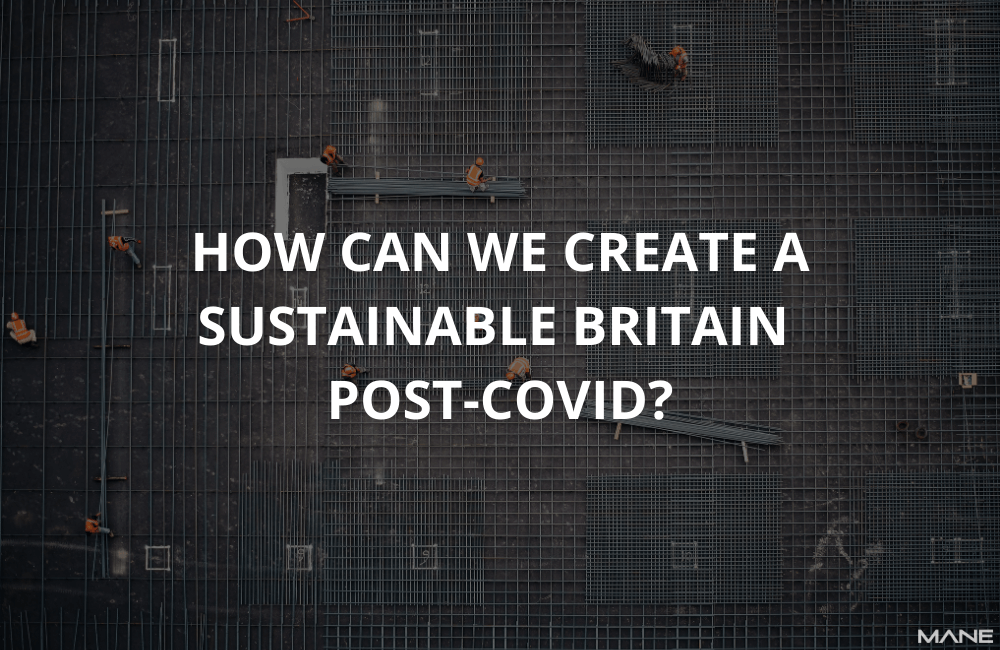How can we create a sustainable Britain post-COVID?
21 Sept, 202010 minsCOVID-19 has drastically changed the face of sustainability in the UK. Read on to explore th...

COVID-19 has drastically changed the face of sustainability in the UK. Read on to explore the difference between the old normal and the new, why infrastructure matters, and the lessons that we need to take on board for the future.
The old normal
Social distancing and the shutdown of whole sectors of industry in the UK and abroad will have far-reaching and long-lasting effects. The Office for Budget Responsibility predicts a 35% drop in GDP and the loss of more than 2 million jobs in Q2 of 2020.
That’s not to say that everything was fine before COVID hit.
- Productivity growth was sluggish, averaging just 0.3% per year in the 2010s, down from 2% per year before the 2008 crash.
- Inequality was rife, with the average Londoner enjoying a disposable income of £27,826 in 2017, while the average Welsh person scraped by on £15,754.
- Decarbonisation posed a serious challenge – of 25 policy actions recommended in 2018 to cut emissions by 80%, just one had been completed by July 2019.
To address these challenges, the UK signed up to two global agreements: the Paris Climate Agreement and the United Nations’ Sustainable Development Goals (SDGs). However, according to UK Stakeholders for Sustainable Development, in 2018 the UK was performing well on just 24% of its SDG targets, on 57% it performed inadequately or had gaps in policy, and on 15% it performed poorly or had little to no policy.
Why infrastructure is vital to sustainable development
Infrastructure delivers services that are vital to sustainable development, like clean power supplies, health care, and sewage networks. 92% of SDG indicators are connected to infrastructure in some way.
SDG 9 (infrastructure) is strongly connected to SDG 11 (sustainable cities and communities), SDG 10 (reducing inequalities), SDG 8 (decent work and economic growth), and SDG 7 (energy). Building infrastructure creates jobs, and once in place, it can spur economic activity..
Infrastructure is also important to SDG 15 (biodiversity) and SDG 14 (protecting habitats). It helps protect the environment by conserving natural resources and reducing climate change.
However, few developed countries think about the SDGs when planning their infrastructure. If Britain can make good progress on its SDG targets, it could take on a leadership role and sell its knowledge through other countries, particularly on how to achieve the goals by developing infrastructure.
The sustainability lessons of COVID
Efforts towards the SDGs and the Paris Climate Agreement will be hit hard by the COVID-induced recession, with the most vulnerable individuals suffering the most. SDG 8 (sustained, inclusive and sustainable economic growth, full and productive employment and decent work for all) and SDG 1 (ending poverty in all its forms within the UK) face the most serious setbacks.
However, some goals might be positively impacted, including SDG 9 (building resilient infrastructure, inclusive and sustainable industrialisation and fostering innovation), SDG 3 (ensuring healthy lives and promoting wellbeing for all at all ages), and possibly SDG 13 (taking urgent action to combat climate change and its impacts). Lockdown has actually benefited the environment in the short term, with dramatic reductions in pollution and CO2 emissions, and if the increase in remote working continues, some of these benefits could last.
As we work towards these goals in the post-COVID context, we need to assimilate the lessons of the pandemic:
- COVID has shown that we’re all connected through our actions. Lesson: we need to treat infrastructure as a system of systems, which can support the societal outcomes we want.
- COVID has also thrown socio-economic divisions into sharp relief. Lesson: key workers are, well, key, and should have priority access to housing, transport, and health care.
- The public can change their behaviour quickly when they’re clear on what they need to do and why it matters. Lesson: they can do the same in the cause of net-zero emissions.
- We’ve seen air quality improvements at the expense of our economy. Lesson: Green recovery plans need to factor in economic and social sustainability too.
- The rush to produce ventilators has shown that access to manufacturing resources can deliver massive social outcomes. Lesson: Leverage access to goods, services, materials and infrastructure supply chains.
- While the overall infrastructure has gone down during COVID, the next crisis might be different. Lesson: Be prepared, build extra capacity into infrastructure networks and link it to a national risk register.
It’s for these reasons that Mane have become members of the Supply Chain Sustainability School. It is the one area that will impact the sector more than anything else, but something that we can overcome if we all work together.


